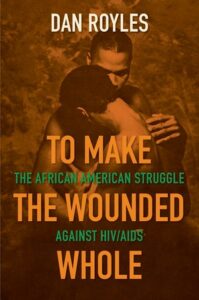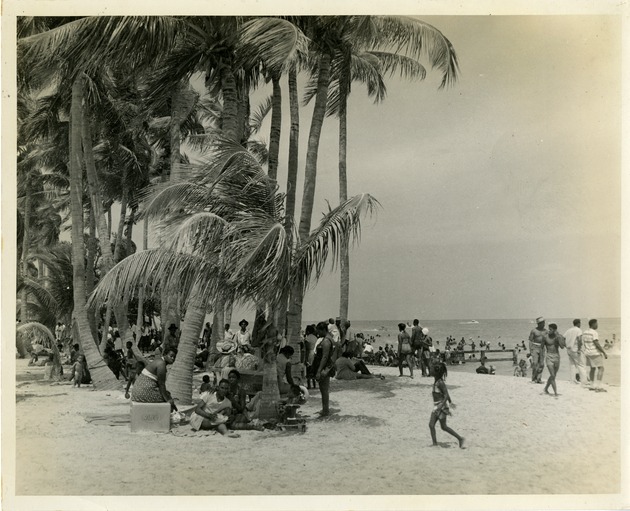 To Make the Wounded Whole: The African American Struggle against HIV/AIDS is now available from University of North Carolina Press! Use promo code 01DAH40 at checkout to receive 40 percent off the cover price. Ebook readers can also purchase the Kindle edition from Amazon.
To Make the Wounded Whole: The African American Struggle against HIV/AIDS is now available from University of North Carolina Press! Use promo code 01DAH40 at checkout to receive 40 percent off the cover price. Ebook readers can also purchase the Kindle edition from Amazon.
To Make the Wounded Whole offers the first history of African American AIDS activism in all of its depth and breadth. It introduces a diverse constellation of activists, including medical professionals, Black gay intellectuals, church pastors, Nation of Islam leaders, recovering drug users, and Black feminists who pursued a wide array of grassroots approaches to slow the epidemic’s spread and address its impacts. Through interlinked stories from Philadelphia and Atlanta to South Africa and back again, this book documents the diverse, creative, and global work of African American activists in the decades-long battle against HIV/AIDS.
Winner—LGBTQ Religious History Award
Honorable Mention—John Boswell Prize, Committee on LGBT History of the American Historical Association
Finalist—Museum of African American History Stone Book Award
Here’s what scholars are saying about To Make the Wounded Whole:
A brilliant account of African Americans’ underappreciated grassroots responses to the AIDS epidemic. This important book strikingly documents this multifaceted health activism and its novel array of healing strategies. A groundbreaking, essential contribution.
Alondra Nelson, author of Body and Soul: The Black Panther Party and the Fight against Medical Discrimination and former Deputy Director for Science and Society, White House Office of Science and Technology Policy
Read and teach this well-written and compassionate book to understand what was done in the past and why issues of visibility, community-based organizing, and global access remain central to contemporary health needs.
Susan Reverby, author of Examining Tuskegee, Journal of American History
Necessary reading for those interested not only in how HIV/ AIDS affects African Americans, but also how Black people responded (and continue to respond) to health inequities.
Antoine S. Johnson, H-Net Reviews
To Make the Wounded Whole and the accompanying oral history archival project are masterful achievements.
Richard Daily, Nursing Clio
To Make the Wounded Whole is an exciting, worthwhile, and accessible addition to the quickly growing field of HIV/AIDS history because it shines a significant spotlight on its often-overlooked intersection with Black communities and history.
Katie Batza, author of Before AIDS, Journal of Social History
Royles’s project is of grand and urgent scope. To Make the Wounded Whole — with its seven case studies on moments in the movement, each detailed, finely researched, and compassionately written — engages in a rich conversation about Black activism within the AIDS epidemic across almost half a century.
Charles O’Malley, Los Angeles Review of Books
Royles’ careful documentation of grassroots movement politics will make [To Make the Wounded Whole] immensely valuable in activist spaces.
Shireen Hamza & Kelsey Henry, Gender & History
Eloquently written and beautifully researched.
LGBTQ Religious History Award Committee
Royles has delivered a masterfully nuanced yet clearly rendered account of one of the greatest challenges to African American health and politics in the twentieth and twenty-first centuries.
Samuel Kelton Roberts Jr., author of Infectious Fear: Politics, Disease, and the Health Effects of Segregation
To Make the Wounded Whole is original and important. It challenges the notion that African Americans were passive, powerless, or oppositional in addressing the health crisis, demonstrating that Black LGBTQ activists and their allies developed powerful and influential community-based responses to the AIDS epidemic.
Marc Stein, author of Sexual Injustice: Supreme Court Decisions from Griswold to Roe
Incredibly ambitious and illuminating.
Isobel Ashby, University of Wisconsin–Madison
Royles shows that activists worked to address not only the HIV/AIDS epidemic itself but also the structural injustice that made African Americans more vulnerable to the disease. . . . Highly recommended.
Yuya Kiuchi, CHOICE Reviews

